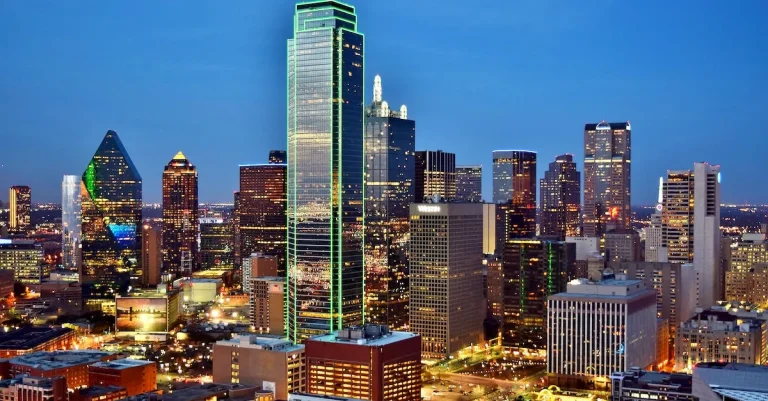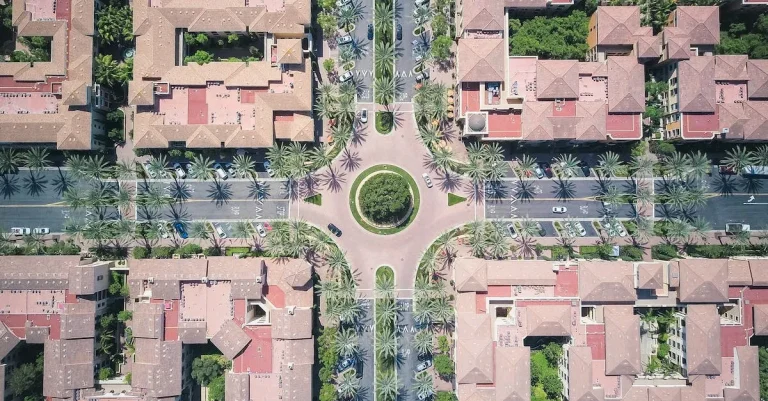Does Los Angeles Have A Monsoon Season?
The monsoon season brings increased rainfall and humidity to many parts of the world, but does the climate of sunny southern California also experience this seasonal shift? If you’re short on time, here’s a quick answer: While Los Angeles does not have a true monsoon season like other regions, such as India and Southeast Asia, it does experience a seasonal increase in humidity and rainfall during summer and early fall.
In this comprehensive guide, we will explore how the climate of Los Angeles changes throughout the year and how the summer months compare to a typical monsoon season. We’ll look at rainfall and humidity patterns, wind shifts, and how the geography of LA influences its weather andseasons.
What is a Monsoon Season?
A monsoon season is a period of time characterized by distinct weather patterns, including heavy rain, high humidity, and shifting winds. It is commonly associated with certain regions, particularly in Asia, where the monsoon phenomenon is most pronounced.
However, the question remains: does Los Angeles have a monsoon season?
Definition of a monsoon climate
A monsoon climate is typically found in tropical and subtropical regions, where there is a pronounced seasonal shift in wind patterns. During the monsoon season, the prevailing winds change direction, resulting in a reversal of airflow.
This change in wind direction brings a significant amount of moisture-laden air from the ocean, leading to heavy rainfall.
In regions with a monsoon climate, such as parts of India and Southeast Asia, the monsoon season is a crucial source of water for agriculture and natural ecosystems. It plays a vital role in shaping the local environment and supporting various forms of life.
Typical weather patterns – including heavy rain, humidity, and wind shifts
In a typical monsoon season, heavy rain is a defining characteristic. The amount of precipitation can vary greatly depending on the location and specific monsoon system. Some areas may experience torrential downpours, while others may see more moderate rainfall.
Along with heavy rain, monsoon seasons are also characterized by high levels of humidity. The influx of moist air from the ocean creates a muggy and sticky environment, which can be challenging for those not accustomed to such conditions.
Another significant feature of a monsoon season is the shifting of winds. The prevailing winds, which typically blow in a certain direction, change course during the monsoon period. This wind shift is a result of the temperature difference between the land and the ocean, which drives the monsoon circulation.
What causes monsoons?
Monsoons are primarily caused by the differential heating of land and water surfaces. During the summer months, land surfaces heat up more quickly than the adjacent ocean, creating a low-pressure area over the land. This low-pressure zone draws in moist air from the ocean, resulting in rainfall.
For Los Angeles, the region does not experience a traditional monsoon season like those found in Asia. However, it does have its own unique weather patterns that can bring heavy rain during certain times of the year.
The most notable example is the winter rainy season, which typically occurs between November and March. During this period, storm systems from the Pacific Ocean can bring significant rainfall to the area.
While Los Angeles may not have a monsoon season in the strictest sense, it is essential to understand the local climate and weather patterns to prepare for potential heavy rainfall events.
The Climate of Los Angeles
Los Angeles is known for its pleasant weather and sunny skies, but does it have a monsoon season? Let’s explore the climate of this vibrant city.
Mediterranean climate characteristics
Los Angeles is blessed with a Mediterranean climate, which means it experiences mild, wet winters and warm, dry summers. This type of climate is characterized by its comfortable temperatures, low humidity, and abundant sunshine throughout the year.
The city’s location near the coast and its proximity to the Pacific Ocean play a crucial role in shaping its weather patterns.
Seasonal weather patterns
While Los Angeles doesn’t have a traditional monsoon season like some other regions, it does experience distinct seasonal weather patterns. The summer months, from June to September, are typically dry and warm, with temperatures often reaching the 80s and 90s Fahrenheit (around 30 degrees Celsius).
This is when the city sees the least amount of rainfall. In contrast, the winter months, from December to March, are cooler and wetter, with temperatures averaging in the 60s Fahrenheit (around 15 degrees Celsius) and occasional rain showers.
Rainfall and humidity trends
Los Angeles receives most of its rainfall during the winter months, with January being the wettest month. However, the city’s annual rainfall is relatively low compared to other parts of the country, averaging around 15 inches (38 centimeters) per year.
The humidity levels in Los Angeles are generally low, thanks to the dry air coming from the nearby deserts and the cooling effect of the ocean breeze.
Influence of geography on LA’s climate
The geography of Los Angeles also plays a significant role in its climate. The city is surrounded by mountains, including the Santa Monica Mountains to the north and the San Gabriel Mountains to the east.
These mountain ranges act as barriers, preventing moisture-laden air from reaching the city and contributing to its arid climate. The coastal location of Los Angeles also moderates its temperatures, keeping them relatively mild throughout the year.
LA’s Summer Rainy Season
Los Angeles, known for its sunny and dry climate, may not be the first place that comes to mind when thinking about monsoon seasons. However, the city does experience a unique phenomenon called the summer rainy season.
During this time, there is an increase in humidity and rainfall, transforming the typically arid landscape into a lush and vibrant environment.
Increase in humidity and rainfall
LA’s summer rainy season usually occurs between the months of July and September. During this period, the city experiences a significant rise in humidity levels, making the air feel more tropical. The increased moisture in the air leads to the formation of clouds, which eventually result in rainfall.
While the overall amount of rain may not compare to regions with true monsoon seasons, such as Southeast Asia or India, it is still a notable change for Los Angeles.
Comparison to monsoon season climates
Although Los Angeles does not have a traditional monsoon season like other parts of the world, there are some similarities in terms of climate characteristics. The summer rainy season in LA brings about an increase in rainfall, just like monsoons in other regions.
However, the intensity and duration of the rainfalls are usually less pronounced in LA. Additionally, monsoon seasons are often associated with specific wind patterns, such as the shift of prevailing winds, which is not observed in LA during its summer rainy season.
Causes of LA’s summer rainy season
The summer rainy season in Los Angeles can be attributed to a few factors. One of the main causes is the interaction between the warm ocean currents, such as the California Current, and the cooler air masses from the Pacific Ocean.
This interaction leads to the formation of low-pressure systems, which in turn bring moisture and rainfall to the region. Additionally, the proximity of the city to mountain ranges, such as the San Gabriel Mountains, can enhance the effects of orographic lifting, further contributing to the summer rainfall.
While the summer rainy season in Los Angeles may not be as intense as monsoon seasons in other parts of the world, it still brings about a welcome change to the city’s climate. The increased rainfall not only nourishes the local flora but also provides relief from the typical dry heat.
So, if you find yourself in Los Angeles during the summer months, don’t be surprised if you experience some unexpected showers!
Impact on Daily Life
Los Angeles is known for its sunny and dry weather throughout most of the year. However, during the monsoon season, the city experiences a significant change in climate. The arrival of heavy rain and increased humidity can have a noticeable impact on daily life for both residents and visitors.
– How the rainy season affects activities
The rainy season in Los Angeles typically occurs between November and March. During this time, outdoor activities may be limited due to the wet conditions. Beach days, hiking trips, and picnics in the park may need to be rescheduled or postponed.
However, this doesn’t mean that all outdoor activities are off-limits. There are still plenty of indoor attractions, such as museums, art galleries, and theaters, that can be enjoyed even on rainy days.
It’s also a great time to explore the city’s vibrant culinary scene or catch up on some shopping in the many indoor malls and markets.
– Tips for preparing for more rain and humidity
When the monsoon season hits Los Angeles, it’s important to be prepared for the increase in rain and humidity. Here are a few tips to help you navigate through this wetter period:
- Invest in a good waterproof jacket or umbrella to stay dry when you’re out and about.
- Check the weather forecast regularly to plan your activities accordingly.
- Keep your home well-ventilated to prevent mold and mildew growth caused by increased humidity.
- Ensure your car tires are in good condition to handle wet roads and reduce the risk of hydroplaning.
- Be cautious while driving, as rain can make the roads slippery and reduce visibility.
By following these tips, you can stay comfortable and safe during the rainy season in Los Angeles.
– Benefits for local environment and water supply
The monsoon season brings much-needed relief to a city known for its dry climate. The increased rainfall helps replenish local water supplies, which is crucial for the region’s water resources. It also benefits the local environment by promoting the growth of vegetation and reducing the risk of wildfires.
Additionally, the rain helps wash away pollutants and improves air quality, making the city feel fresher and cleaner.
According to a study conducted by the University of California, the monsoon season in Los Angeles contributes to a 20% increase in annual water supply for the region. This is a significant boost that helps alleviate water shortages and ensures a more sustainable future for the city.
So, while the monsoon season may disrupt daily activities temporarily, it plays a vital role in maintaining the ecological balance and ensuring the well-being of Los Angeles and its residents.
Conclusion
While Los Angeles does not experience a true monsoon season, its climate does shift in the summer months to become more humid with increased rainfall. This rainy period from late summer into early fall is nowhere near the dramatic monsoons of India, but it does impact daily life for Angelenos. Understanding LA’s Mediterranean climate and its seasonal weather patterns can help you prepare for and enjoy the city’s warm, sunny summers and mild, wet winters.








